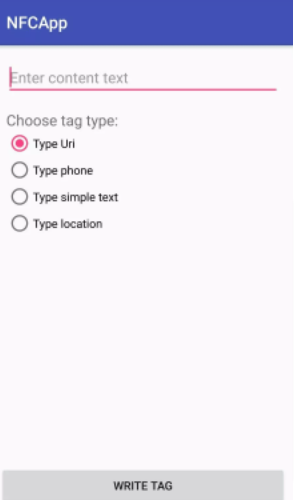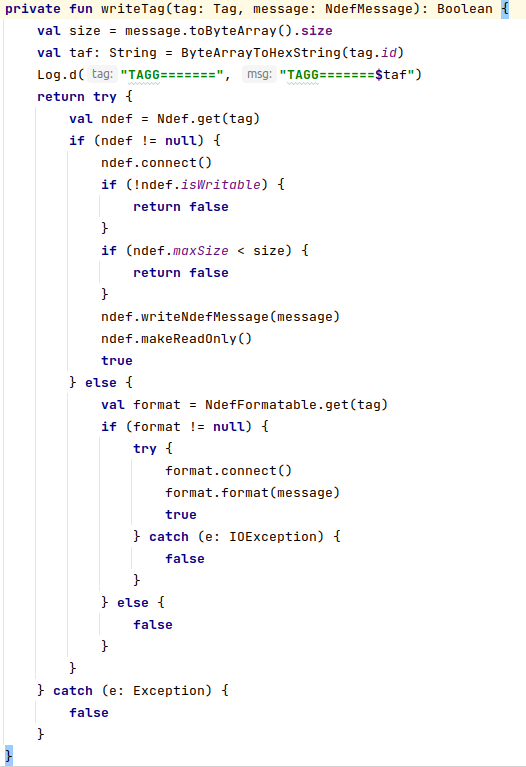How to Develop an NFC Reader App? [Keep These Tips Handy]
In this complete guide, you are going to discover how to develop an NFC reader app.

Technology has seeped its way into our daily lives, with close to around 40% of the population having internet access globally, while the rest observe themselves making an entry almost daily online. This has been stated according to a report by the World Development Report.
This, therefore, suggests the overall importance of enhancing different functionalities as well as services. Thus, you may have observed the rise and advent of new forms of technologies like location technology like GPS, and wireless communication technologies such as NFC for instance that ensures seamless wireless information transfer.
In this post, we discussed this technology in detail, citing the reasons for its growing popularity, followed by listing the ways the technology operates, and its salient features. Once you have gotten knowledge of this, we will discuss the techniques that businesses can follow during the development of an NFC reader app that ensures maximum interactivity, and maximum customers in the long run.
So without further ado, let’s start.
What is NFC?
Have a look at this video below to get a basic idea of NFC technology also known as near-field communication technology.
By observing this video, you may have gotten a basic idea of the technology. In the lines below, however, to ensure this technology is easy to understand, here is its definition below.
NFC had its inception done way back in 2004. From that point onward, there has been no looking back for it. It focuses on ensuring seamless information exchange which is wireless. This transmission takes place over short distances, approximately 10 centimeters via a chip embedded within a device.
Having its derivation done from RFID, a wireless system consisting of two components, namely, the tag and reader; it helps users perform different tasks like-
- Connect to other devices
- Make payments
- Share media and files
Knowing now about this technology, let’s now understand its operations.
How Does NFC Technology Work?
When transmitting data via NFC technology, two NFC-enabled devices, one for transmitting and the other for receiving are what you need first.
Say, for example, you want to transmit information between the NFC tag and the smartphone, this means the former acts as a passive device that can only perform data transmission. However, the latter is an active device capable of performing two tasks: one receives signals from the NFC tag, and the second; transfers data to other NFC-enabled smartphones.
This might make you think that the technology is similar to Bluetooth. However, this is far from right. The technology (NFC) neither requires one to pair devices, nor permission to transmit data. All they have to do is to place a tap on the transmitting device through an NFC-compatible smartphone. Next, it becomes easy to receive information or perform different tasks like receiving payments.
Knowing how technology functions, it is vital to note the different techniques for communication to transpire through it (NFC).
Communication Mode for NFC — Methods
There are two ways communication happens with technology (NFC).
- One-Way Communication: This demands the presence of a passive and active NFC device.
- Two-Way Communication: This demands the presence of two active NFC devices. This can also be in communication form between two NFC-enabled smartphones for file transfer.
Knowing the different modes through which communication with NFC takes place, let us delve deep into the salient features of this technology that has been responsible for its growing popularity.
Salient Features of NFC Technology
NFC technology is based on the RFID technology at 13.56 MHz, having an operating distance that is typically up to 10 cm.
This is followed by the compatibility support it renders to contactless RFID technologies, alongside a data exchange rate that is around 848 kbit/s.
Finally, the technology operates in three modes, namely, P2P, card emulation, and reader/writer.
All these unique aspects have been responsible for the overriding popularity of this technology, thus leading to more and more businesses embracing NFC app development services.
We also ensured to not keep ourselves behind. Being a known mobile app development company, we are known for embracing the top technologies when building apps. Thus, we made sure to implement the NFC technology in our recently launched app, Plap.
With the aid of this technology, we have built this app to give professionals the flexibility to seamlessly network and connect with one another through a scan they perform within the app.
Look at this image below to take a peek at the app below.

Through this image, you can get insight into how the app allows easy connection between professionals through a simple scan.
Seamless Functionality of Our Developed App That is Called “Plap”
Take a look at the video below to observe how our Plap app seamlessly operates allowing professionals to network and connect easily with one another.
Seeing this video, you can notice how the app allows easy networking simply through a scan they perform.
Therefore, it becomes crucial to embrace NFC app development to your business advantage now. This will help to streamline its success to the greatest extent.
There are three ways you can do this.
- Tag reader/writer
- Peer to peer
- Card emulator
Have a look at this image below to look into them.

In the image above, you can observe the three ways to build an NFC-powered app. This includes reader, peer-to-peer, and card emulation.
Below however we will be discussing the steps that need to be followed for building an NFC reader app for the iOS and Android platforms.
How to Develop an NFC Reader App for Android Platform?
- Get Android Studio and NFC Tag
- Create a project within Android Studio
- Write a UI. This includes adding four tag types to the app: comprising plain text, phone number, link, and location.
Have a look at the image below to get an idea of what we are saying:

- Create the main class for the app. This is by the initialization of the NFCManager class. Next, once it becomes easy to determine the availability of NFC on the device, you can allow the app to receive notifications only when a tag may be nearby. Then as and when the app gets inactive, you block notifications. This is followed by installing IntentFilter and defining the onNewIntent method. Doing so will get the trigger process to take place as and when a device locates the NFC tag nearby.
- Check if NFC is available and then create a class, naming it presumably NFCManager and adding different methods that may be accessible to perceive in MainActivity.
Have a look at the image representations below to see how the task is done on the Android platform.
Image 1

Image 2

Image 3

Image 4

Image 5

In addition to the methods highlighted in the image above, others that get followed before embracing the testing stage are recording the data to the NFC tag, pursued by creating a message containing a link or a phone number. This includes creating a message that possesses the location coordinates, where it is vital to mention non-typical errors within the code to allow users to gain insight in case NFC may not be available.
- On completing these steps, the app is ready to launch and test. Hence, it becomes crucial to insert the link and place a tap on the Write Tag Button. During this process, it is relevant to get your device to the tag so that you seamlessly record data.
With these steps followed, it is a cakewalk to develop the NFC Reader app for the Android platform.
How to Develop an NFC Reader App for the iOS Platform?
- Build the tag reader by mostly configuring the app so that you can easily detect NFC tags. This includes placing a tap on the Near Field Communication Tag Reading under the Capabilities tab. This is followed by adding the NFCReaderUsageDescription key. This will act as a string item to the Info.plist file. Next, while adding a value, enter the string to discuss the factors why the app requires access to the NFC reader of the device.
Note: In case the app reads the tag without providing the key mentioned above and the string, the app will exit immediately.
- Create the NFCNDEFReaderSession object, and give instructions to the user by mostly setting the alertMessage property. Last, call begin () to start the reader session. This will allow seamless radio-frequency polling on the phone and scan for tags (if any).
This also includes placing a tap on the Scan button again to gain perception into additional tags if present.
Have a look at the image below to gain insight into this better.

- Adopt the Reader Session Delegate Project so that it becomes seamless to allow the delegate to receive notifications from the reader session. This may be if it is reading the NDEF message or if it becomes invalid due to the session coming to an end, or witnessing an error.
- When the reader session retrieves a new NDEF message they receive, the session gets it sent to the delegate. This is by calling the readerSession (_:didDetectNDEFs:) method.
This allows the app to use the data fruitfully or store messages, etc so users can view them (messages) later.
- In a situation where the reader session comes to an end, the delegate method readerSession (_:didInvalidateWithError:) so that the error object becomes easy to pass, and the reason to end the session becomes easy to state.
Take a peek at the image below to understand this step better.

- Write the NDEF message to the tag. This is after invalidateAfterFirstRead gets set to false. This prevents the session from becoming invalid.
See the image below to observe this step visually.

Once this happens, it so occurs that the reader session detects a tag called the readerSession (_:didDetectNDEFs:) delegate method. This allows the detection of more than one tag, followed by the app asking the user to remove the extra tag and restart the polling to scan to detect new tags.
However, when app confirmation takes place for one tag alone, the tag connection and verification happen to ensure the same is writable. This allows the app to write the NDEF message read earlier to the tag.
Following these steps, you can build an NFC reader app that ensures contactless data transmission so that better business processes become easy to achieve.
Wrapping up
Channeling NFC app development has helped businesses ensure seamless contactless communication between gadgets. This ensures seamless data transfer for short-range wireless data. Enterprises are already flourishing courtesy of channeling technology. Hence, it becomes vital for you as an entity to gain a competitive edge. Get an NFC app that ensures unique customer service and streamlines business processes. This will keep you ahead in the market!
The post is originally published at xongolab.com
